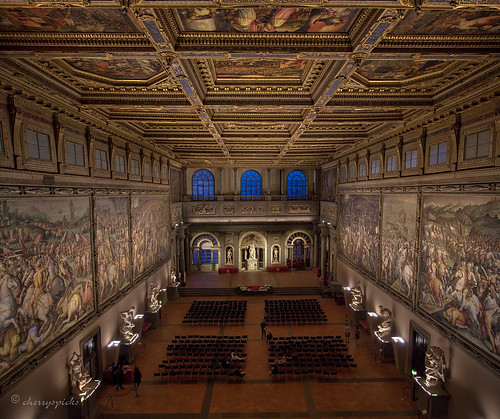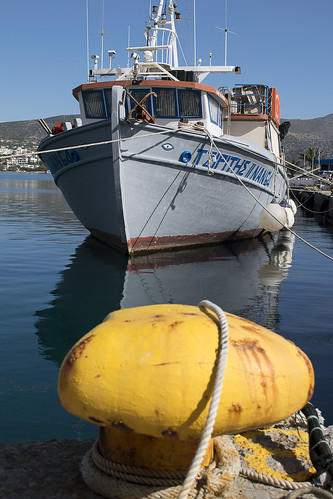
The Palazzo Vecchio ("Old Palace") is the town hall of Florence, Italy. It overlooks the Piazza della Signoria with its copy of Michelangelo’s David statue, as well as the gallery of statues in the adjacent Loggia dei Lanzi.
The Hall of the Five Hundred (Salone dei Cinquecento) is the largest and most important room in terms of artistic and historic value in Palazzo Vecchio. This impressive hall, which plays a key role in Dan Brown’s Inferno (there you go Alvin Harp !), is 54 meters long, 23 meters wide, and 18 meters high. It is the largest room in Italy made for a civil power palace.
The Hall of the Five Hundred was built in 1494 by Simone del Pollaiuolo and Francesco Domenico and commissioned by Fra Girolamo Savonarola. Savonarola had ousted the Medici from power for a short period and had founded a new Florentine Republic, which lasted between 1494 and 1498.
He tried to establish a more democratic government for the city of Florence and thus created the Council of Five Hundred (or Great Council), consisting of five hundred people, modeled after the Grand Council of Venice. In this way, the decision-making power belonged to a greater number of citizens, and it was more difficult for a single person to take control of the city. The tangible result of these reforms was the creation of the Salone dei Cinquecento in the government building, which at the time involved a remarkable engineering effort.
Savonarola was arrested in 1498, hanged, and burned at the stake in the Piazza della Signoria as a “heretic, schismatic, and for preaching new things.” Later, the Medici returned to power and in 1540 chose Palazzo Vecchio as a residence, radically transforming it.
Most of the work was entrusted to Giorgio Vasari. The Salone dei Cinquecento was transformed from a place of celebration of the power of the Republic to the boardroom of the Duke Cosimo I de’ Medici, where he received ambassadors and gave audience to the people.
The decorations, therefore, had to exalt and glorify the Medici family. To accentuate the grandeur of the hall, Giorgio Vasari raised the ceiling seven meters, covering the truss structure with a beautifully decorated coffered ceiling. The forty-two panels were carried out by a team of painters coordinated by Vasari. In the original sketches, the center was to be occupied by an allegory of Florence, but Duke Cosimo actually wanted a glorious depiction of himself.
The whole room is richly decorated, and Giorgio Vasari, along with his helpers, painted on the walls six scenes of battle that represent the military successes of Cosimo I against Pisa and Siena. On the east side (to the right), you can find the Conquest of Siena, the Conquest of Porto Ercole, and the Battle of Marciano. On the west side (to the left), you can find The defeat of the Pisans at the tower of San Vincenzo, Maximilian of Austria attempting the conquest of Livorno, and Pisa attacked by the Florentine troops.
(from Wikipedia and www.florenceinferno.com)
Posted by cherryspicks (off) on 2017-04-21 10:08:07
Tagged: , architecture , ceiling , interior , historic , florence , art , building , engineering , cinquecento , savanarola , medici , hall , painting , palazzo vecchio , perspective , dan brown







